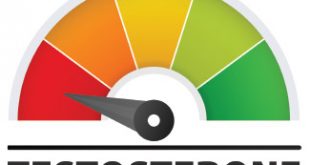Hearing loss affects 48 million Americans over the ageof 12. In fact, according to the Centers for Disease Controland Prevention, it is “the third most common chronic physicalcondition in the United States,” outpacing even diabetes and cancer.
 A whole host of comorbidities are positively correlated with hearing loss, from dementia to depression to diabetes, making regular hearing screenings and proactive treatment for hearing loss all the more crucial. However, The Hearing Review reported in 2016 that though hearing aids have long been the gold standard for those with hearing loss, only 14.2 percent of those needing aids purchase them, and that number drops even more during economic recession, suggesting treating hearing loss may be seen as a luxury.
A whole host of comorbidities are positively correlated with hearing loss, from dementia to depression to diabetes, making regular hearing screenings and proactive treatment for hearing loss all the more crucial. However, The Hearing Review reported in 2016 that though hearing aids have long been the gold standard for those with hearing loss, only 14.2 percent of those needing aids purchase them, and that number drops even more during economic recession, suggesting treating hearing loss may be seen as a luxury.
More and more over-the-counter (OTC) devices, such as PSAPs, are being developed and marketed as less expensive products to help hearing loss. Though this might increase the number of people actively trying to correct their loss, it has also created confusion about whether OTC devices can offer the same benefit as can traditional hearing aids. The key differences between hearing aids and PSAPs are as follows:
Product class: The FDA classifies and regulates hearing aids as medical devices expressly designed to compensate for hearing loss. In contrast, in their regulatory requirements from 2013 (which are not legally binding), the FDA indicates that PSAPs are “intended to amplify environmental sound for non-hearing impaired consumers.” Furthermore, they urge that PSAPS not be marketed as replacements for hearing aids or as over-the-counter hearing aids. Finally, federal law does prohibit companies that make PSAPs from calling them “hearing aids.”
Amplification: Hearing aids use technology such as broadband, filters, and directional microphones to ensure the amplification is customized to the user’s unique hearing loss. PSAPs simply amplify all sounds within a given radius. With a PSAP, someone with a high-frequency hearing loss would receive the same signal as someone with a lowfrequency hearing loss; with a hearing aid, each person would receive a signal tailored to their specific hearing loss.
Features: Hearing aids are available with features such as telephone amplifiers, streaming capabilities, and smartphone apps that allow for saving of location-specific setting details. Most PSAPs are solely a receiver, an amplifier, and a microphone.
Issues with PSAPs: PSAPs are not regulated, so the sound level produced could damage hearing rather than help it. Furthermore, the design of PSAPs results in the potential for earwax to get pushed farther into the canal, resulting in impaction that requires medical attention. The extra expenditure for hearing aids would be worth the attendant benefits in most cases. Furthermore, not only does the FDA maintain that PSAPs are for non-hearing impaired people, but simply purchasing and using such a device could lead to hearing damage. Hearing loss may seem straightforward — if you can’t hear, you need something to amplify sound — but each hearing loss is different and requires a different approach, both to maximize the effectiveness of the device and to avoid further hearing damage. The ideal approach is to only purchase a device that helps hearing loss if it requires fitting by a hearing care specialist.
Do you have specific questions about hearing aid technology and digital connectivity? Our hearing care team at Winter Haven and Ridge Audiology are here to help. Give us a call at (863) 594-1976 or submit a contact form online at WinterHavenAudiology.com to connect with a Doctor of Audiology today.
CALL TODAY to schedule your appointment 863.594.1976
510 1st St S | Winter Haven
704 SR 60 E | Lake Wales
Lin FR, Niparko JK, Ferrucci L. Hearing loss prevalence in the United States. Arch Intern Med. 2011;171(20):1851–1852. http://www.ncbi.nlm.nih.gov/pmc/articles/PMC3564588/. Accessed May 1, 2017.
Centers for Disease Control and Prevention. Loud Noise Can Cause Hearing Loss: Public Health and Scientific Information. https://www.cdc.gov/nceh/hearing_loss/public_health_scientific_info.html. Accessed May 1, 2017. Smith C, Wilber LA, Cavitt K. PSAPs vs. hearing aids: an electroacoustic analysis of performance and fitting capabilities. Hearing Review. 2016;23(7):18.
http://www.hearingreview.com/2016/06/psaps-vs-hearing-aids-electroacoustic-analysis-performance-fitting-capabilities/. Accessed May 1, 2017. Miracle Ear. Ask the Experts: Hearing Aids vs. PSAPs.
https://www.miracle-ear.com/ask-the-expert-hearing-aids-vs.-psaps-blog. Access May 1, 2017. U.S. Food and Drug Administration (FDA). Regulatory Requirements for Hearing Aid Devices and Personal Sound Amplification Products–Draft Guidance forIndustry and Food and Drug Administration Staff. Washington, D.C.: FDA. Nov. 7, 2013.
http://www.fda.gov/MedicalDevices/DeviceRegulationandGuidance/GuidanceDocuments/ucm373461.htm. Accessed May 1, 2017.
 Central Florida Health and Wellness Magazine Health and Wellness Articles of the Villages
Central Florida Health and Wellness Magazine Health and Wellness Articles of the Villages



